Fix: chkdsk cannot lock current drive error
Chkdsk is a dis checking utility that comes pre-loaded with the Windows. This tool can be used to check the disk for any errors, both disk errors and physical errors like bad sectors can be checked, and fix these errors. However, when using chkdsk commands, you might see an error like this

This error will prevent you from scanning the drive. The scan, usually, doesn’t work when you type Y (Y for Yes) to schedule the scan for the next startup of your system. You will either see the same error or you will encounter an error “Failed to transfer logged messages to the event log with status 50” while performing the scan.
The reason for this error is exactly what the error message says. The drive cannot be locked because it in use by another process. The chkdsk cannot perform the scan while your disk is in use. Sometimes, the problem might be related to a third party application causing the chkdsk to give this error. Chkdsk schedules the scan on the next restart because that is the time when your drive won’t be used by other programs. Windows will run the scan before all the programs/files load properly. So, the issue will most likely resolve on the scheduled scan. If the chkdsk gives the same error on the scheduled scan then that means your drive is still in use. This will finally be resolved by running the command prompt from the Advanced Startup Options. That solves the issue because your OS isn’t loaded at that time.
Tips
- Turn off your security applications like anti-virus applications. These applications usually have a disable option that can be used to disable these applications for a short period of time. Simply right click the application icon from the system tray and select the disable option. If you can’t see the disable option then double click the security application icon and look for a disable option in that panel. Once the security application is disabled, try to run the chkdsk commands again.
- If you started to see the issue after a Windows Update then that might be an issue. There were cases when the Windows Update introduced a bug that would prevent people from using the chkdsk properly. These kind of bugs are fixed in the later updates. So, make sure your Windows is updated to the latest version
- If you are seeing the error “failed to transfer logged messages to the event log with status 50” while trying to run the chkdsk then you need to get in touch with your HDD manufacture’s or buy a new HDD. This error means that your HDD is badly damaged or corrupted.
Method 1: Run chkdsk <drive letter:> /f /r /x
Running the chkdsk <drive letter:> / f / r / x usually resolves the issue for a lot of users. If you are seeing the error on running this command then you should skip this method.
Here are the steps for running this command
- Press Windows key once
- Type command prompt in the Start Search
- Right click Command Prompt from the search results and select Run as administrator
- Now type chkdsk <drive letter:> /f /r /x and press Enter. Replace <drive letter:> with the drive letter you want to check and a colon. For example, it should be like this chkdsk c: /f /r /x.

Once the command runs, either the scan will run successfully or your will see the message
“Chkdsk cannot run because the volume is in use by another process. Would you like to schedule this volume to be checked the next time the system restarts? (Y/N)”
If you see this message, simply type Y and press Enter to schedule the scan. Once done, reboot and the scan will run on the startup.
Method 2: Chkdsk in Safe Mode
If method 1 didn’t work or rescheduling gives the same error or rescheduled scan doesn’t even start then try to run the chkdsk in safe mode. Here are the steps for getting into Safe Mode
- Hold Windows key and press R
- Type msconfig and press Enter

- Select Boot tab
- Check the option Safe Boot in the Boot options section
- Select the option Minimal under the Safe Boot option
- Click Ok

- Windows will ask you to restart. Click Restart
- When the Windows starts again, Press Windows key once
- Type command prompt in the Start Search
- Right click Command Prompt from the search results and select Run as administrator
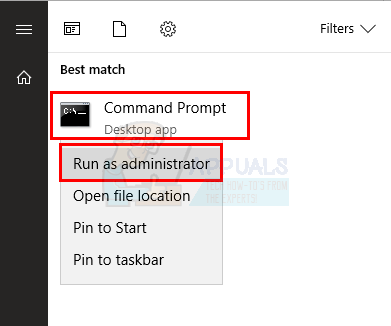
- Now type chkdsk <drive letter:> /f /r /x and press Enter. Replace <drive letter:> with the drive letter you want to check and a colon. For example, it should be like this chkdsk c: /f /r /x.

Check if the chkdsk still gives the error or not.
Note: You need to turn off the Safe Mode option when you are done with the chkdsk.
- Hold Windows key and press R
- Type msconfig and press Enter

- Select Boot tab
- Uncheck the option Safe Boot in the Boot options section
- Click Ok
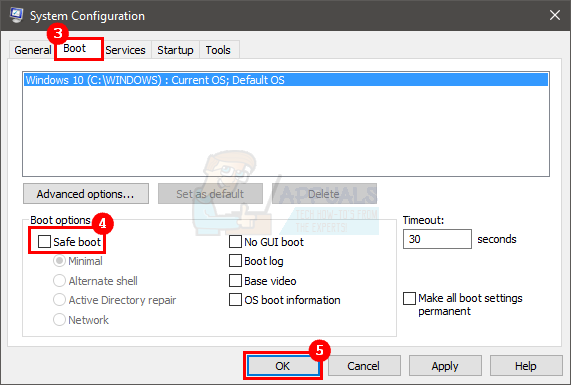
- Windows will ask you to restart. Click Restart
Method 3: Advanced Startup Options
Note: Before you proceed, make sure you have a Windows Installation Media. It can either be a CD/DVD or a Flash drive. The Installation Media should be the same as that of the version you have installed on the computer. If you don’t have one, you can borrow from a friend. This method doesn’t need you install anything. It will require you to use the Installation media to get into the Advanced Startup Options
If the methods 1 and 2 didn’t solve your issue then running the chkdsk command from the Advanced Startup Options will resolve the issue for you. Here are the steps for running the command prompt from Advanced Startup Options menu
- Turn off your system
- Insert the Windows Installation Media Disc/Flash Drive
- Turn on the system
- Press any key when you see the message Press any key to boot from CD/DVD… Note: If you don’t see this message then you need to check the boot order from the BIOS menu. Reboot and go to your BIOS menu. Set the boot order in a way that your Installation Media is at the top. If you Installation media is a CD/DVD then move your CD/DVD drive to the top. If you have a Flash Drive then move that to the top of the boot order and then try again.
- You will see a Windows startup screen. Click Next
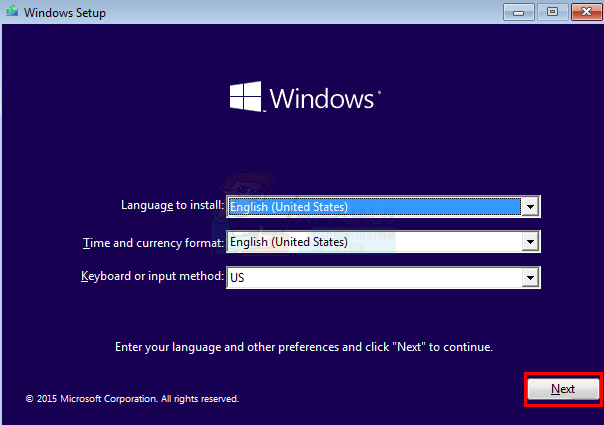
- Click Repair your computer link
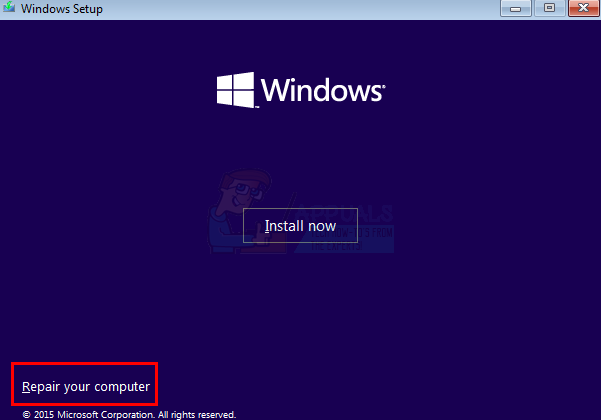
- You will see the Advanced Startup Options
- Click Troubleshoot

- Click Advanced Options

- Click Command Prompt
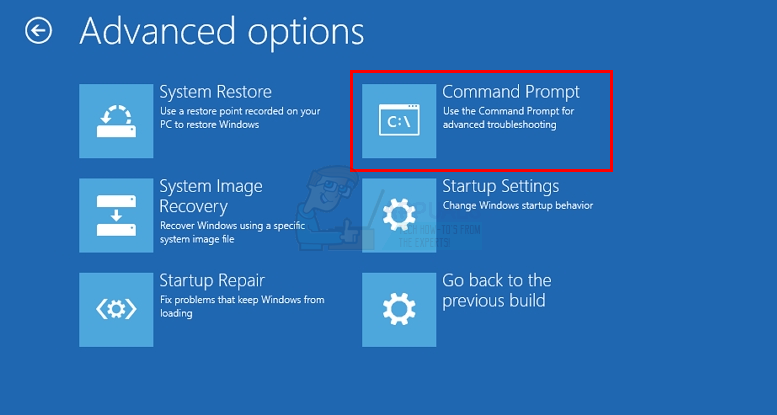
- Select the account that you want to use to open the command prompt. You should select the account with the administrator rights.
- Enter the password for the account and click Continue
- This will open the Command Prompt
- Type chkdsk <drive letter:> /f /r /x and press Enter. Replace <drive letter:> with the drive letter you want to check and a colon. For example, it should be like this chkdsk c: /f /r /x.
- If you still see the same error or an error saying the drive is write protected then continue
- Type diskpart and press Enter
- Enter list volume and press Enter
- Locate the drive letter of the drive that has the Windows installed on it.
- Type exit and press Enter
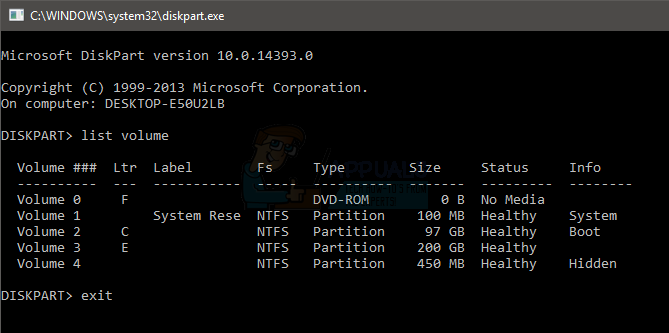
- Now type chkdsk <drive letter:> /f /r /x and press Enter. Replace <drive letter:> with the drive letter drive letter you found in step 18 and a colon. For example, it should be like this chkdsk c: /f /r /x. Usually, we mix up the drive letters which results in these issues. The issue should be gone once you enter the right drive letter.
Close the command prompt and click Continue on the Advanced Startup options to reboot.
Important Note
If you are seeing different errors on different methods e.g. you are seeing the “failed to transfer logged messages to the event log with status 50” error when running chkdsk from Advanced Startup Options and you are seeing the “volume bitmap errors” when you run chkdsk in Safe Mode then there might not be a problem. If you keep seeing the same errors in these situations then you don’t have to do anything. The “failed to transfer…” error you are seeing in Advanced Startup Option might be because the log can’t simply be written to an installation disk.
The point is, if you aren’t seeing any other big problems and your system is running fine without any BSODs or other issues then you should be fine. These errors might simply be because of the various different situations you are running the chkdsk into. However, if you notice any weird behavior or corrupt files then take your HDD to a computer repair shop and make sure it isn’t damaged or have any issues. If your HDD really is damaged then you might lose a lot of your personal data.